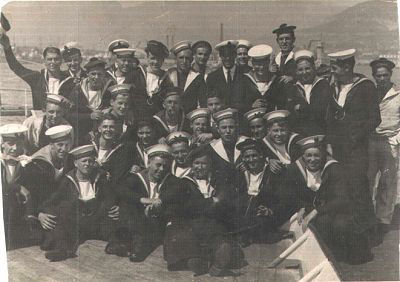
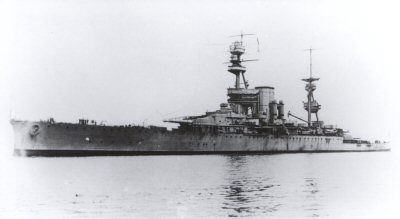
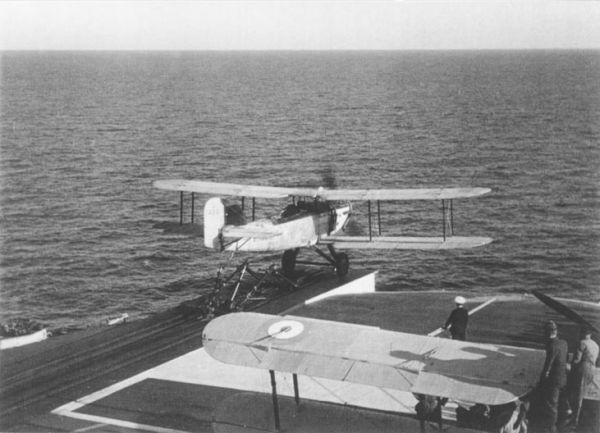
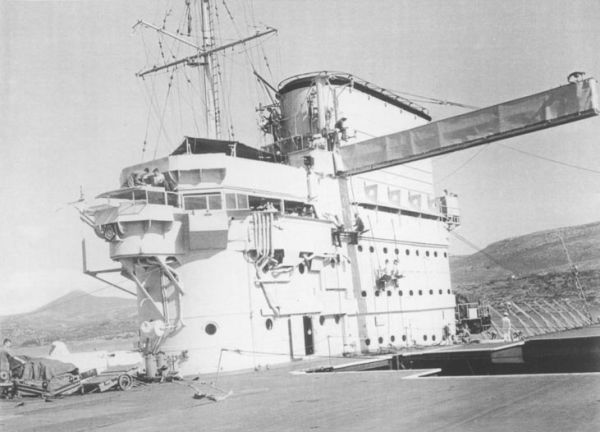
HMS Glorious was the second of the three Courageous-class battlecruisers built for the Royal Navy during the First World War. Designed to support the Baltic Project championed by the First Sea Lord, Lord Fisher, they were relatively lightly armed and armoured. Glorious was completed in late 1916 and spent the war patrolling the North Sea. She participated in the Second Battle of Heligoland Bight in November 1917 and was present when the German High Seas Fleet surrendered a year later.
Glorious was paid off after the war, but was rebuilt as an aircraft carrier during the late 1920s. She could carry 30 per cent more aircraft than her half-sister Furious which had a similar tonnage. After re-commissioning in 1930, she spent most of her career operating in the Mediterranean Sea. After the start of the Second World War in 1939, Glorious spent the rest of the year unsuccessfully hunting for the commerce-raiding German cruiser Admiral Graf Spee in the Indian Ocean before returning to the Mediterranean. She was recalled home in April 1940 to support operations in Norway. While evacuating British aircraft from Norway in June, the ship was sunk by the German battleships Scharnhorst and Gneisenau in the North Sea with the loss of over 1,200 lives.
Credit to: Histograph




Tribute to the crews lost on the 8th June 1940
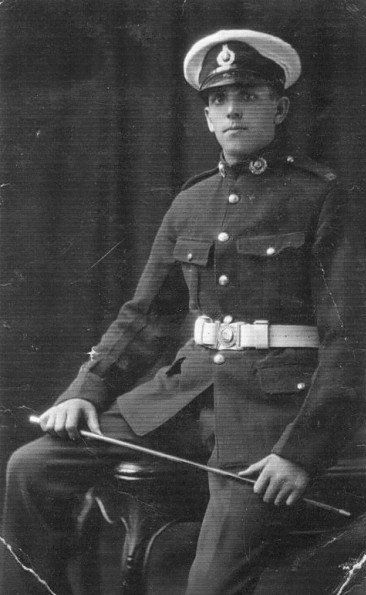
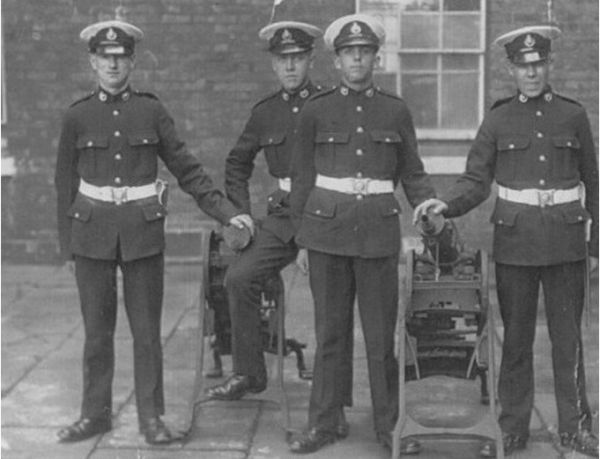
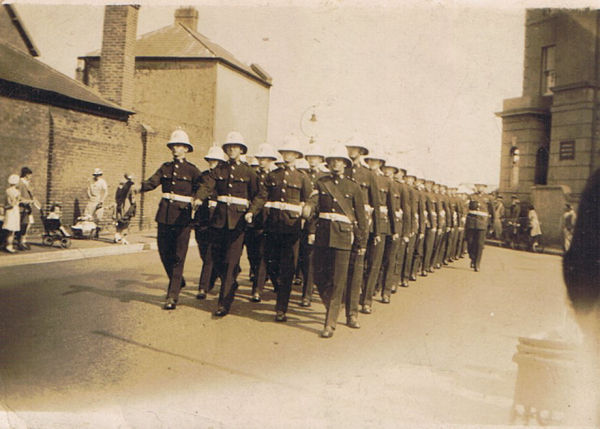
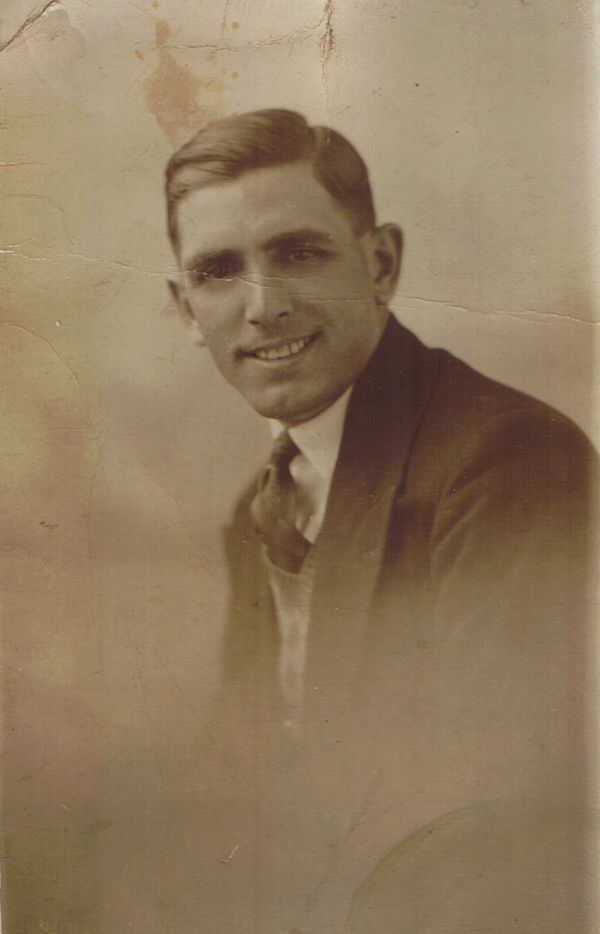
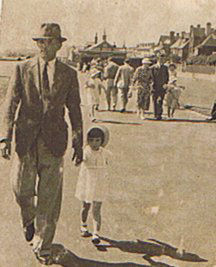
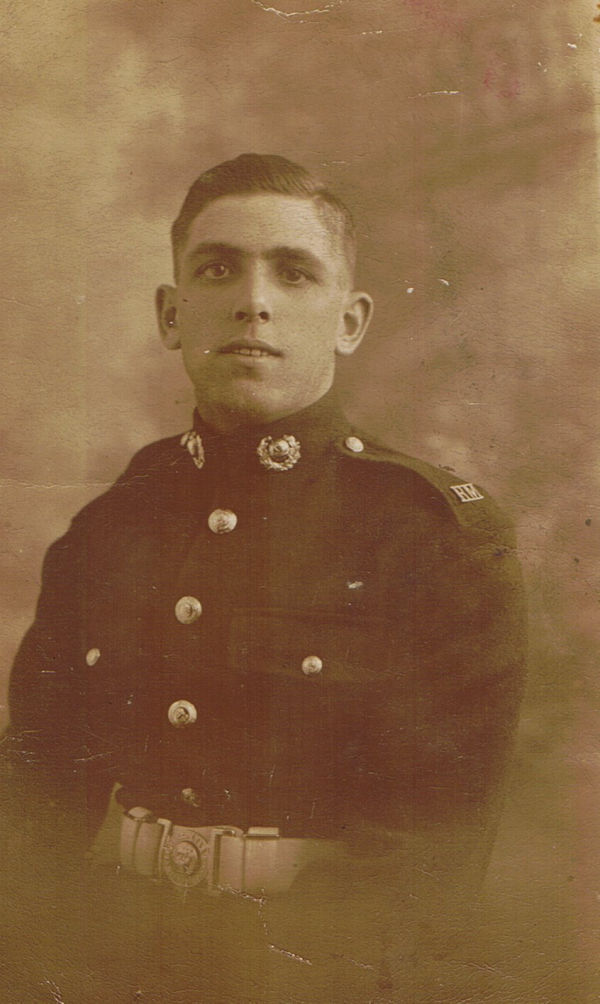
A guide to the ship
Credit to: Drachinifel
The mistakes and blunders that resulted in the sinking of the Glorious
Article below by the Times Malta 14 February 2015
credit to: Saviour Azzopardi
Looking onto the beauty of the Grand Harbour, one can imagine how relatives felt on seeing the majestic entrance HMS Glorious must have made as it made its way past the breakwater to its berthing place in the 1930s. Relatives of the men serving on board HMS Glorious could see its men lined up on deck as it slowly made its way into the harbour. Sometimes the ship’s band could be heard and seen playing and this was indeed a wonderful sight. Many speak of the happy atmosphere and bonding that could be found on board HMS Glorious, something that was to change in its later years.
The tragic and mysterious end of aircraft carrier HMS Glorious, a ship that served during both world wars, and its two destroyer escorts, HMS Ardent and HMS Acasta, at the beginning of World War II has been the subject of much debate and queries by politicians and historians, as well as relatives of the men serving on HMS Glorious. Yet 75 years after its sinking, the truth has yet to emerge as to why HMS Glorious, along with its two destroyer escorts, had been allowed to leave the safety of the convoy they formed part of and to sail on alone to Scapa Flow in Scotland.
HMS Glorious was built as a light battle cruiser in 1916 and served with valour during World War I. It was even present when the German High Seas Fleet surrendered in 1918. The ship was decommissioned after the end of the war, but was rebuilt as an aircraft carrier in the late 1920s.
After it was recommissioned it spent most of the time operating in the Mediterranean. HMS Glorious relieved HMS Courageous in the Mediterranean Fleet in June 1930 and remained there until 1939. After the start of World War II, HMS Glorious spent the rest of 1939 unsuccessfully hunting for the German cruiser Admiral Graf Spee in the Indian Ocean, before returning to the Mediterranean.
HMS Glorious was a frequent visitor to our shores and often used the island’s drydock facilities when needed. It was therefore no coincidence that many Maltese navy personnel served on board HMS Glorious. English navy personnel met and married into Maltese families, forming a lasting bond between the two countries.
HMS Glorious sailed to Alexandria after a brief stop at the Malta drydocks. It had previously unloaded Gloster Gladiators, intending to pick them up on the return journey. However, this was not to be as it was ordered to head straight back to the UK.
The Gloster Gladiators proved to be vital for the air defence of Malta in the beginning of the war. The Gladiators were the island’s only air defence and were later on to be its mythical Faith, Hope and Charity. They were not best-suited for the task but they proved to be sufficient until Hawker Hurricanes relieved them of their duties.
HMS Glorious was recalled to the Home Fleet in April 1940 to provide air cover for British forces landing in Norway. The Allies were trying to stop the German war machine from occupying Norway, which provided iron ore as well as safe shipping lanes for German navy vessels.
HMS Glorious and HMS Ark Royal arrived off Norway on April 24, where 263 Squadron were flown off and aircraft from the two carriers attacked targets in the south of Trondheim, before HMS Glorious had to return to Scapa Flow on April 27 to refuel and embark more aircraft.
These sorties were to go on until late May. However, even initial successes proved to be futile and finally the British forces were ordered to withdraw from Norway owing to the strength of the German forces.
"The Ministry of Defence slapped a ‘100-year rule’ embargo on the whole affair"
‘Operation Alphabet’ began in the north on June 3 and 4. The British forces were ordered to withdraw from Norway as secretively as possible. However, German intelligence had noticed increasing activity in the north and had ordered its own operation to try and disrupt the convoys.
‘Operation Juno’ embarked with orders to attack the British convoys from the south. Every piece of armament and equipment that could be salvaged in Norway and taken aboard the ships was taken; the rest were destroyed so that it would not fall into German hands.
On its last mission, Hurricanes from 46 Squadron successfully landed on HMS Glorious without arresting hooks, something that had never been attempted, let alone done before. This was done by placing seven-kilo sand bags in the rear end of the aircraft, allowing full brakes to be applied immediately on landing.
On a previous mission, the captain of HMS Glorious, Guy D’Oyly Hughes, had ordered Air Commander J.B. Heath to attack certain enemy shore positions in Norway. Heath refused on the basis that the targets were ill-defined and that his aircrafts were not suitable for the mission. D’Oyly Hughes did not take this well. Once at Scapa Flow, Heath was placed under house arrest awaiting a court martial on the return of HMS Glorious from its next mission in Norway.
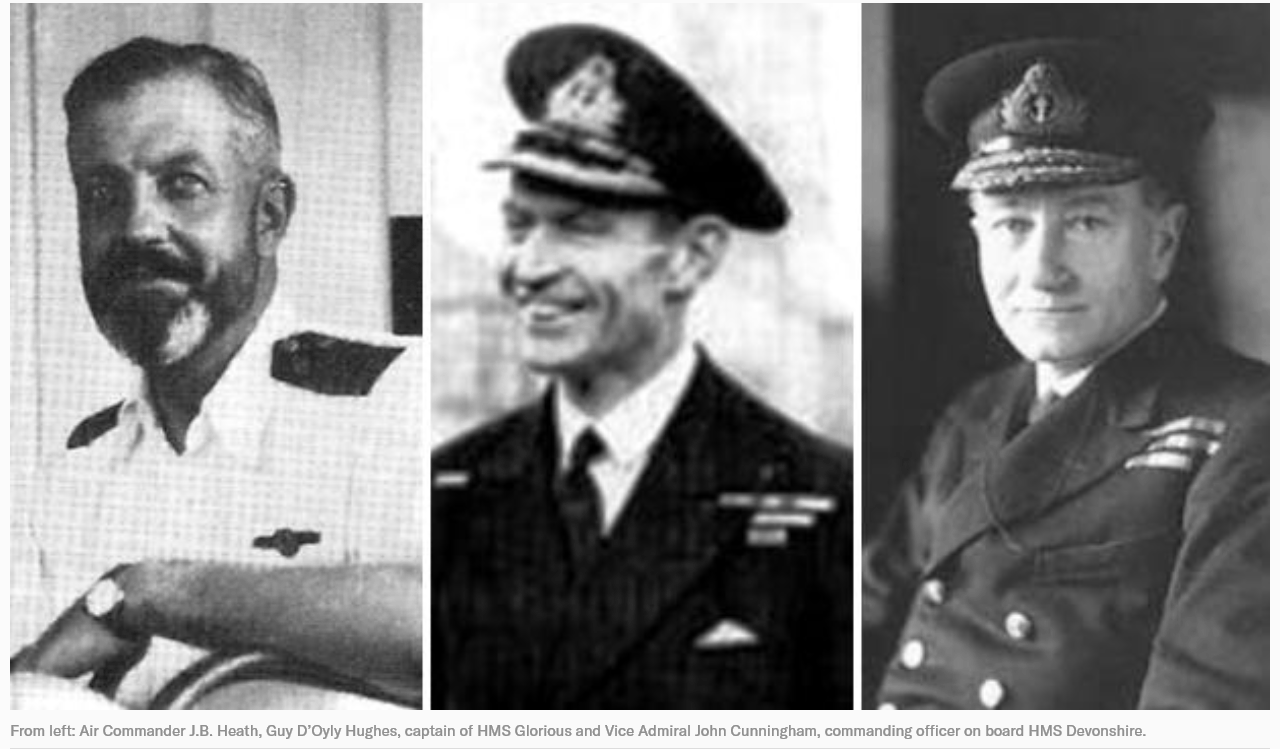
HMS Glorious formed part of one of two convoys heading out of Norway. Vice Admiral aircraft carriers Sir Lionel Victor ‘Nutty’ Wells was on HMS Ark Royal which together with HMS Glorious formed part of one convoy. The Norwegian royal family and members of parliament had been transferred onto HMS Devonshire along with Norwegian gold, sailing separately towards Scapa Flow.
In the early hours of June 8, HMS Glorious asked for permission from Wells to proceed independently to Scapa Flow, citing lack of fuel as the reason for the request. Permission was granted and HMS Glorious and its two escorts, HMS Ardent and HMS Acasta, parted from the convoy.
HMS Glorious was not flying any air cover as is usually done by an aircraft carrier to give it visibility cover for miles around. Nor did it have personnel in the crow’s nest of the ship even though it was a clear and calm day. These factors proved to be the undoing of all three ships later in the day.
On the afternoon of June 8, smoke from the funnels of HMS Glorious was sighted by two German battleships Gneisenau and Sharnhorst. They increased speed and soon were in shooting range, given their superior firing power. After a fierce two-hour battle, all three British ships were sunk.
The heroic attempts of HMS Ardent and HMS Acasta to defend HMS Glorious were in vain. Glorious had unfortunately taken a direct hit from 24,175 metres in the third salvo fired from the Sharnhorst, the longest gunfire hit any enemy warship had ever achieved.
HMS Ardent was engaging the superior Sharnhorst while Acasta was laying a smokescreen to hide HMS Glorious. Both destroyers scored hits on the Sharnhorst, and with its last two torpedoes Acasta heavily damaged the far superior German battleship. Sharnhorst, accompanied by Gneisenau, made for Trondheim for repairs, and due to their exposed position did not stop to pick up survivors from any of the three ships.
HMS Glorious had sent out two distress messages, but no one reported receiving them. The reason why the two destroyers did not send distress messages, as is usually done in these circumstances, is unknown. HMS Devonshire was the closest to HMS Glorious, and a signalman on board Devonshire swore on oath that it did receive distress messages from the Glorious.
However, the admiral on board HMS Devonshire said that the messages were garbled and he took no action to investigate them or to pass the message on to other ships, warning them of enemy activity in that area. The Royal Navy took no action to try and rescue the 900 men who were left to freeze to death in the frigid Norwegian waters. In total, 1,531 men from the three ships lost their lives.
After three days in the water, 38 men from HMS Glorious and one from HMS Acasta were picked up by the Norwegian steam merchant Borgund. Only 41 men were picked up in all; one died on reaching land. The survivors spoke of the horror of watching their mates die and the helplessness of not being able to help.
The news of the sinking of the Glorious rocked Britain, and Parliament wanted answers. The blame fell on the then Prime Minister Neville Chamberlain, who was already out of favour in Parliament. They blamed him for all the wrong decisions taken even though these had been made by the First Sea Lord Sir Winston Churchill. Ironically, Sir Winston became Prime Minister on July 4, 1940, after Chamberlain’s resignation.
The three theories that emerged soon after the tragedy in 1940 are still being investigated to this day and none have been put aside.
The first theory is the one that has been most commonly used by the Ministry of Defence. This theory is that HMS Glorious asked for permission to leave the convoy because it was lacking fuel and would consume less fuel if it proceeded on its own.
Navy historians have refused to accept this theory as the real reason why HMS Glorious left the safety of the convoy. Calculations have been made and questions have been asked and all have refused to accept this as a valid reason for leaving the convoy.
However, the Ministry of Defence stuck to its theory that lack of fuel was the reason Wells gave D’Oyly Hughes permission to leave the convoy.
What is curious is the fact that Wells was never questioned even though he lived until 1963.
Why did he give Glorious permission to leave the convoy? His answer to this simple question would have solved the enigma of this sad tale.
The second theory is that D’Oyly Hughes was in a hurry to get back to Scapa Flow to attend the court marshal of Heath. Could this be the real reason why he was given permission to leave the convoy?
Here again, navy historians and experts dismiss this theory as being a very trivial reason to place much-needed ships, planes and trained personnel in danger. Heath was still under house arrest, and after his case was heard he was released without any action being taken against him.
Here again, had he been questioned, Wells could have been able to shed more light on this. But we will never know for sure as Wells was never asked. Why?
Trained men sat on these inquiry boards and this was the biggest naval tragedy at that time. Is it possible that none of them thought of asking this simple question?
The Ministry of Defence soon came up with an answer and slapped a ‘100-year rule’ embargo on the whole affair.
The third theory, which may be the most talked about and even the most believable, is that HMS Devonshire had picked up the distress message transmitted by Glorious but could not go to its aid as its orders were to save the Norwegian royal family, members of parliament and the much-needed gold.
However, many are of the opinion that Devonshire could have transmitted a message for other ships to go to help HMS Glorious and more survivors could have been picked up. HMS Devonshire claims that the message from HMS Glorious was garbled and not enough sense could be made from it.
However, the admiral on board HMS Devonshire, Vice Admiral John Cunningham, immediately ordered to increase speed and started zigzagging to confuse the enemy and also ordered the ship to be on full alert, something done only in preparation for surface battles.
So one may ask, was the message garbled and could no sense be made of it or did it contain enough information to warrant caution? And if so, why not communicate this caution to other ships Devonshire knew were in the area?
Unfortunately even here we will never know the real reason as to why because HMS Devonshire logs went missing, so no one can be sure as to what actually happened during those fateful hours.
Seventy-five years after the worst Royal Navy tragedy at that time, relatives of the 1,531 men who perished are still asking the same questions asked in 1940: Why did they die? Why did no one pick them up from the freezing Norwegian waters for three whole days? Had they been sacrificed so that the two convoys, and HMS Devonshire, could get home safely?
In 2000 in the House of Commons, a parliamentary question put by Labour MP Tam Dalyell regarding the Glorious incident was answered by MP Peter Kilfoyle, who said that, “after exhaustive research”, new evidence had come to light: HMS Glorious had been asked to leave the safety of the convoy by the Commander-in-Chief of the Home Fleet and proceed to Scapa Flow to conduct Heath’s court marshal.
I am a little perplexed and confused by this answer. For 60 years, up to 2000, these relatives had been told that after all the evidence had been evaluated and exhaustive research conducted, the only valid reason for HMS Glorious to leave the convoy was lack of fuel. Now they are told differently.
"Relatives of the 1,531 men who perished are still asking the same questions asked in 1940 "
What does not make sense is that throughout the previous 60 years of exhaustive research no one found out that it was the C-in-C Home Fleet who had given the order which ultimately sent the 1,531 men to their death. The C-in-C is no ordinary Joe and surely someone must have known if this was indeed the case.
Wells was credited with giving HMS Glorious permission to leave the convoy and this was considered to be a very bad decision for him to make. He paid the price because he was never given another important role during the war. Did he take the blame for someone else? If so, one is obliged to ask why and for whom? Why did the C-in-C Home Fleet not come forward and say it was his decision and that Wells had nothing to do with it?
In 2008, the Glarac Association donated a plaque to the Maltese in honour of the Maltese ratings who lost their lives on board HMS Glorious. The association is a non-profitable organisation made up of relatives of the men lost on the three ships Glorious, Ardent and Acasta. This gesture was made because of the enduring bond between the relatives of men serving on the three ships and the Maltese. This plaque is proudly displayed at the Maritime Museum in Vittoriosa.
Local relatives hope that the Maltese government will take up their fight and help them give a proper and dignified burial to their ancestors, who went on a mission, did their duty and, like so many before and after them, paid the price with their lives for our safety and freedom.
The relatives of these men do not want monetary retribution. All they really want is a truthful burial and a rightful place in the history books. It is hard for the relatives to accept the answers given by the Ministry of Defence after the treatment they have had for the past 75 years.
Maybe there is also a kind of conspiracy, giving them a merry-go-round of answers that lead to nowhere until the 100-year Secrecy Act slapped on this tragedy in 1940 elapses.
Enough time has passed and the 1,531 men and their sacrifice should be remembered, and it is incumbent upon us to seek answers to this unfortunate tragedy. They gave up their tomorrow so that we could have our today. We shall remember them. May they rest in peace.
Every year, relatives of the Maltese seamen who died on board HMS Glorious as well as other Glarac members from the UK attend a memorial service at the Maritime Museum, Vittoriosa.